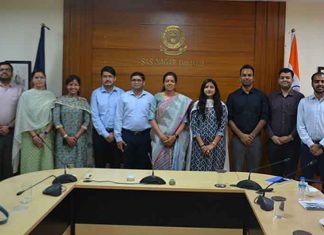New Delhi, July 31, 2020-
Hepatitis means inflammation of the liver commonly caused by viral infection. In India, over 40 million people are chronically infected with Hepatitis B and 12 million are affected by Hepatitis C. We loose over 50,000 individuals annually due to liver failure as a result of hepatitis.
Dr. Avnish Seth, Director, Gastroenterology & Hepatobiliary Sciences, Fortis Memorial Research Institute, Gurugram debunks the myths and states the facts around this condition:
Myth 1: All Hepatitis viruses are the same
Fact: Hepatitis A, B, C, D and E are different viruses with different modes of transmission and clinical manifestations. While Hepatitis A and E are transmitted by ingestion of contaminated food, Hepatitis B and C are transmitted by blood transfusion, unprotected sex and tattoos. Hepatitis D is rare in India and occurs only in some patients with Hepatitis B.
Myth 2: Hepatitis A is the most common cause of hepatitis in adults in India
Fact: By the age of 10 years, more than 95 percent children are already positive for Hepatitis A ,indicating poor hygiene and sanitation in the country. Hepatitis E is the most common cause of Acute Viral Hepatitis in adults in India. Unhygienic street food is the major culprit.
Myth 3: One can differentiate between various types of acute viral hepatitis based on clinical symptoms
Fact: Patients develop fever followed by loss of appetite, high coloured urine and vomiting. Jaundice usually lasts for 2 to 3 weeks and the type of virus causing the illness can be differentiated only by blood tests.
Myth 4: All hepatitis can be passed on from parent to child.
Fact: Hepatitis is not a genetic disease and is not inherited. However, Hepatitis B is often transmitted from mother to child during the birthing process. Transmission can be prevented if vaccine and immunoglobulin are administered to the newborn within 12 hours of birth. Mother to child transmission of Hepatitis C is rare.
Myth 5: Hepatitis virus A and E can spread with-in the family
Fact: By the time jaundice appears the patient stops shedding virus in stool and becomes non-infectious. Epidemics of Hepatitis E usually result from contamination of a water source with sewage.
Myth 6: Vaccine is available against all types of Hepatitis virus
Fact: Vaccine is available only against Hepatitis A and B
Myth 7: One should limit oneself to only bland and boiled food during hepatitis
Fact: Good nutrition is important during hepatitis. In the presence of nausea and vomiting, whatever the patient desires to eat should be welcome. Glucose solution, sugarcane juice, bitter gourd, radish are not recommended. Consumption of turmeric need not be restricted as it has anti-inflammatory properties.
Myth 8: Breastfeeding is unsafe during Hepatitis?
Fact: Breastfeeding is safe as Hepatitis virus cannot be transmitted to the baby through breast milk.
Myth 9: Tattooing and piercing do not transmit Hepatitis B and C
Fact: Use of unsterile sharp instruments for procedures like tattooing, piercing, face cleaning, manicure, pedicure may transmit the viruses.
Myth 10: It is safe to consume alcohol as soon as the jaundice disappears
Fact: The liver takes up to 6 months to repair itself. Alcohol should be avoided for 6 months after Hepatitis A and E and for life in patients who develop Chronic Hepatitis B or C. (Agency)
YesPunjab now has two separate Facebook Pages for English & Punjabi content – Please Like & Share both Pages
English FB Page – https://www.facebook.com/yespunjab/
Punjabi FB Page – https://www.facebook.com/yespunjabpunjabi/






































































